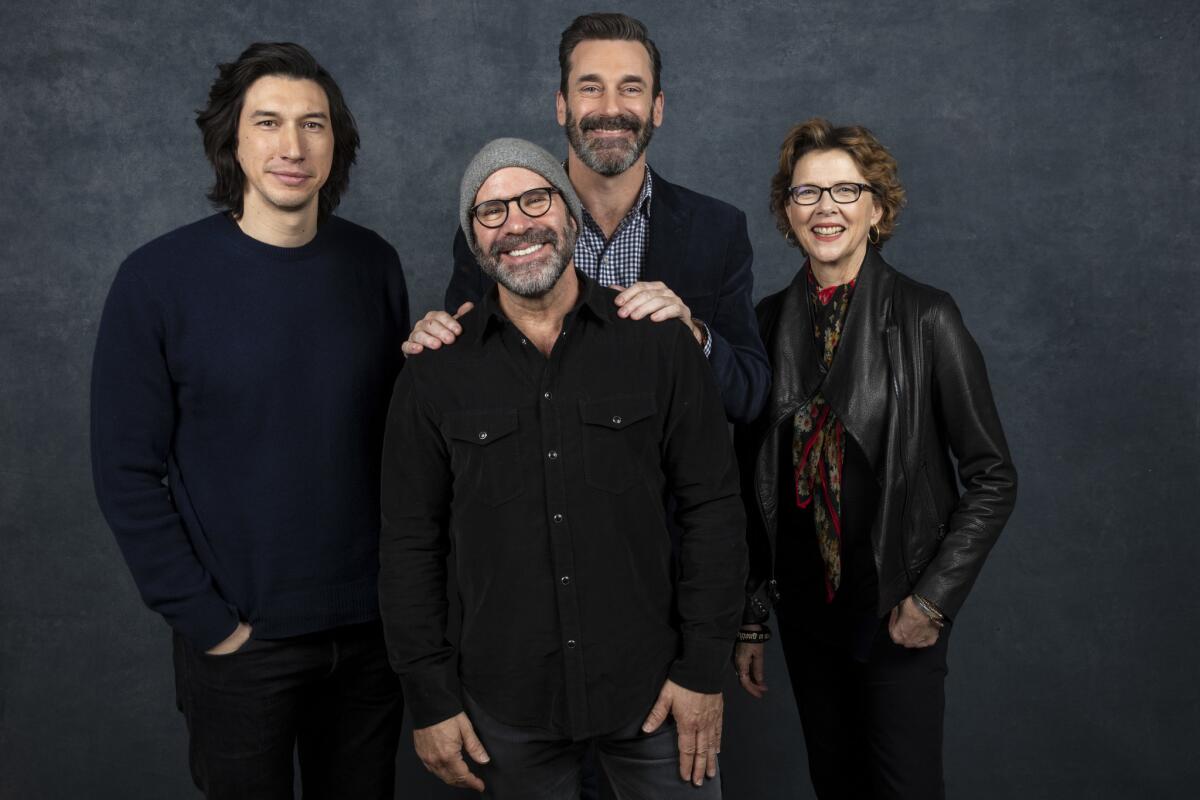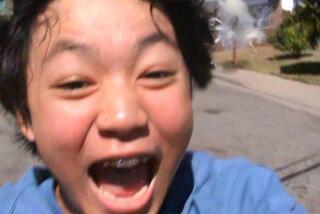Sundance drama ‘The Report’ dramatizes Senate battle over post-9/11 torture

Writer/director Scott Z. Burns and actors Adam Driver, Annette Bening and Jon Hamm visit the L.A. Times Studio at Chase Sapphire on Main to discuss “The Report.”
After the world-premiere screening of “The Report” on Saturday night at Sundance’s biggest venue, the Eccles Theater, writer-director Scott Z. Burns brought Adam Driver, Annette Bening, Jon Hamm and Jennifer Morrison to the stage to warmly boisterous applause.
But when Burns then brought out the real Daniel Jones, who is portrayed by Driver, the audience erupted into a standing ovation.
The film depicts Jones’ time as a congressional staffer and the five years he spent as chief investigator while working for Sen. Dianne Feinstein (D-Calif.) on the Senate Intelligence Committee report on the CIA’s detention and interrogation program. His research and findings would contradict the official CIA record of the government’s policies regarding torture, euphemistically referred to as “enhanced interrogation techniques,” in the period following the terrorists attacks of Sept 11, 2001.
After the premiere, the propulsively paced movie garnered many comparisons to the best picture-winning “Spotlight” for its emphasis on process-oriented detail. There was also mostly universal acclaim for the performances of Driver as Jones and Bening as Feinstein. By Monday morning the news broke that Amazon had bought the film for $14 million, with an eye to a fall release.
It was on a plane to Sundance 5 years ago, when he was attending as an audience member, that Burns read a magazine article about the two psychologists hired by the government to design and spearhead the EIT program. That eventually lead him to meeting Jones.
“And the story he told me about the process of completing the report and getting the report out into the world became incredibly compelling to me,” Burns said in an interview ahead of the festival. “So I became interested in not only writing about the program but telling a story of someone who’s trying to tell that story.”
I became interested in not only writing about the program but telling a story of someone who’s trying to tell that story.”
— Writer-director Scott Z. Burns on ‘The Report’
The film’s credited inspiration is the Vanity Fair article “Rorschach and Awe” by Katherine Eban. Burns also said he had help fact-checking the script from New Yorker writer Jane Mayer, author of the book “The Dark Side: How the War on Terror Turned into a War on American Ideals.”
The film does feature graphic and disturbing scenes of what the torture program was like in practice. After the screening Saturday night, Burns asked the crowd, “I guess I have just really one question, which is how many people here, if you could just raise your hand, and tell me if you believe coercive measures work?”
After no hands were seen to go up, Hamm quipped, “Just that one guy... Keep an eye on him.”
Burns added, “Because there are surveys that say that half of our country still believe that it does.”
Driver portrays Jones as someone intensely committed to his work and the higher ideals behind it, often to the detriment of his personal life and professional career.
“It felt good to be a part of something like this,” Driver, who flew to Sundance directly from the set of the next “Star Wars” installment, said on the afternoon before the premiere. “Just someone who had such strength of character ... you kind of hope that these people exist in the world. I want a Dan Jones driving my car. You kind of hope that there are these people who have such moral conviction that are locked in a room somewhere against whatever odds they have stacked against them.”

Perhaps speaking to the dense, policy-nerd wonkiness of the storytelling, the emotional climax of the movie comes with Bening delivering a stirring speech that Feinstein gave from the Senate floor. Moments later the movie features C-SPAN footage of the late Sen. John McCain, also speaking in the Senate. (If you never thought you would be moved by C-SPAN, think again.)
Following the premiere screening, Bening said she has known Feinstein for many years — “I’m from California, I’m a Democrat, we both went to San Francisco State” — but did not talk to her specifically about the project.
“I almost thought it was stronger for the movie if it’s not about that,” Bening said. “It’s not about the agenda, the movie’s just trying the best it can to tell the truth about what happened. And in this case she was at the center of something that happened that was the right thing.”
During the film’s post-premiere Q&A, an audience member asked whether McCain knew of the project before his death in August 2018.
“McCain did know that we were making the movie,” Bening said. “I was privileged to know John McCain, I was at his funeral with my husband [Warren Beatty] and that’s the part that always gets me — the part with John in our movie. ... He knew about it and he supported it.”
“John McCain has an interesting role in the movie,” Burns said in a prior interview. “This was, to me, a really important moment in our very recent history, where a Republican leader and the leader of the Democratic Party worked together on an issue about real core American values.
“I really hope that people look at the movie and go, ‘This isn’t ancient history,’” Burns added. “This was like four or five years ago, and we were able to put aside partisan politics and make a clear statement about who we’re supposed to be in the world.”
FULL COVERAGE: 2019 Sundance Film Festival »
More to Read
Only good movies
Get the Indie Focus newsletter, Mark Olsen's weekly guide to the world of cinema.
You may occasionally receive promotional content from the Los Angeles Times.







